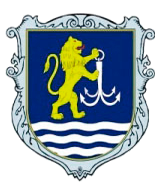STRUCTURE AND CHARACTERISTICS OF THE MULTIMODAL DELIVERY FROM THE STANDPOINT OF DIGITALIZATION
Abstract
Introduction. The near future is a period of transport logistics and supply chains digitalization, which requires specific structuring and modeling of those objects and processes that have not been previously studied from this point of view. This is the first stage of the movement towards digitalization, the essence of which is the standardization of structures not only for documents but also for objects and processes. For digitization of multimodal deliveries clear identification of structure and characteristics, i.e. formation of system model is necessary. This will allow not only to locally consider delivery in the framework of certain digital solutions, but also to consider an integrated set of deliveries for a multimodal operator in order to find sources of efficiency, for example, based on the synergy. The purpose of the research is to form a system structure representation of multimodal delivery taking into account its various aspects, to establish the main characteristics of delivery as integral quantities on the base of its system representation. Results. The structure of multimodal delivery in accordance with the multifaceted view of it is identified. As a forming element for further research, taking into account the specifics of digitalization, the “operation” of the transporttechnological process was chosen. The basic possible variants of physical movement of cargo and points of the vehicle changes are formed. It is proposed to present the sequence of operations in the form of a network model, which allows taking into account the main characteristics of each operation – time, cost and reliability – to determine the final characteristics of delivery as a whole. Two approaches to determining the reliability of delivery depending on the available statistical information are proposed. Conclusions. Taking into account the characteristics of each component of the alternative delivery option, its final indicators are formed – cost, time and reliability, which are the basis for the choice of the appropriate option. Changing at least one element in this system changes the characteristics of the entire delivery. This is used to adjust the option that would meet the requirements.
Downloads
References
2. Pavlova N., Onyshchenko S. Organization of transport company’s projectoriented management (on the example of the freight forwarding company). Management of Development of Complex Systems. 2020. № 42. Р. 23–28. URL: https://doi.org/10.32347/2412-9933.2020.42.23-28.
3. Towards Digital Twins of Multimodal Supply Chains / А. Busse, В. Gerlach, J.C. Lengeling, Р. Poschmann, J. Werner, S. Zarnitz. Logistics. Exploring the Potentials of Automation in Logistics and Supply Chain Management: Paving the Way for Autonomous Supply Chains). 2021. № 5 (2). Р. 25. URL: https://doi.org/10.3390/logistics5020025.
4. Driving progress towards the digitalization of multimodal transport. URL: https://unitingaviation.com/news/capacity-efficiency/driving-progresstowards-the-digitalization-of-multimodal-transport/.
5. Pavlova N., Onyshсhenko S. Development and Research of a Model for Optimizing the Composition of a Project-Oriented Forwarding Company’Suppliers. Technology audit and production reserves. 2021. № 1 (2). Р. 57. URL: https://doi.org/10.15587/2706-5448.2021.225521.
6. Онищенко С.П., Смрковская В.Ю. (2010). Моделирование процесса формирования интегрированных систем доставки грузов. Вестник ОНМУ. 2010. № 30. Р. 142–149.
7. Коскіна Ю.О. Формалізація процесу організації системи доставки вантажів. Наукоємні технології. 2020. № 45 (1). Р. 111–117. URL: https://doi.org/10.18372/2310-5461.45.14582.
8. Коскіна Ю.О. Теоретико-множинний підхід до моделювання структури систем доставки вантажів. Вісник Вінницького політехнічного інституту. 2019. № 5. Р. 62–74. URL: https://doi.org/10.31649/1997-9266-2019-146-5-62-74.
9. Chen Dandan, Yong Zhang, Liangpeng Gao and Russell G. Thompson (2019) Optimizing Multimodal Transportation Routes Considering Container Use Sustainability. 2019. № 11. Р. 19:5320. URL: https://doi.org/10.3390/su11195320.
10. Організація мультимодальних перевезень вантажів за участю авіаційного транспорту / І.В. Борець, О.Є. Соколова, О.О. Соловйова, І.І. Висоцька. Вісник НТУ. 2020. № 1 (46). Р. 35–44. URL: https://doi.org/10.33744/2308-6645-2020-1-46-035-044.
11. Galina V. Bubnova, Olga V. Efimova, Irina V. Karapetyants, Petr V. Kurenkov. Digitalization of intellectualization of logistics of intermodal and multimodal transport. MATEC Web Conf. 2018. № 236. URL: https://doi.org/10.1051/matecconf/201823602013.
12. Kolar, Petr & Schramm, Hans-Joachim & Prockl, Günter. Digitalization of Supply Chains. Focus on International Rail Transport in the Case of the Czech Republic. 2020. Р. 4540–4546. URL: https://doi.org/10.24251/HICSS.2020.555.
13. Marmolejo-Saucedo J.A. Design and Development of Digital Twins: a Case Study in Supply Chains. Mobile Netw Appl. № 25. Р. 2141–2160. URL: https://doi.org/10.1007/s11036-020-01557-9.





